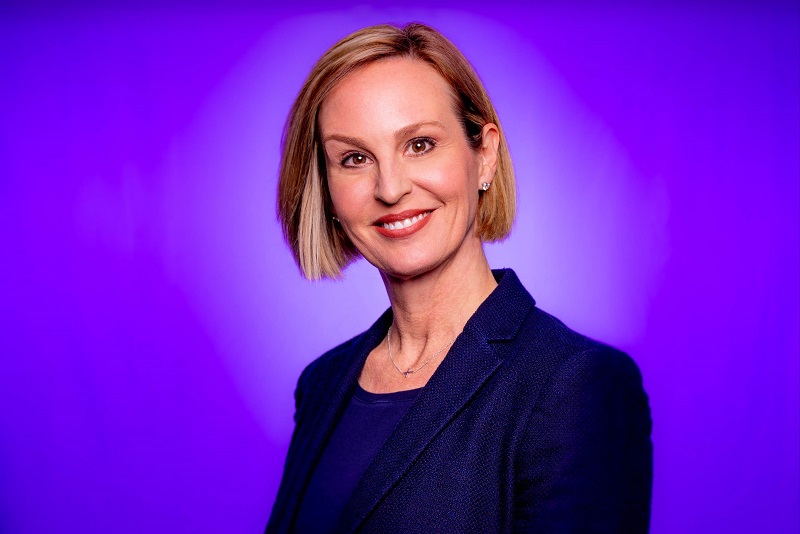Speaking with DiversityQ, Tammi Warfield discusses how Delphix strives to overcome similarity bias, the difference between women in tech and technical women, and why it’s important to pause to achieve a diverse workforce.
When recruiting staff, many organisations may be tempted to take the easy route: a colleague knows of someone who wants to work there, or they opt for a candidate that ‘fits’ the existing workforce – known as the similarity bias.
How to tackle such bias was one of two important lessons that Warfield learned as Vice President for Customer Success (Business Applications) at Microsoft. The other was the importance of pausing on the hiring journey.
She has now introduced both to Delphix since joining the company last July as Senior Vice President of Customer Success. “At Microsoft, we were not allowed to extend an offer to hire unless we had diverse candidates in the interview loop,” Warfield explains. “That practice taught me the value of the pause.
“I’ve had people say, ‘oh, there’s so and so’, ‘this person really wants to work here’, or ‘they already know the company’. Great, let’s have them go through the process, and if they’re ultimately the best person, then we’ll hire them. We want to create career opportunities, but we also want to create a robust organisation.
“When we pause and ensure that we’ve got a diverse interview loop, it takes us through the process of opening up our thoughts, to see things a little bit differently. And as a result, the outcome can be fantastic.
“You either end up with a candidate ordinarily you wouldn’t have met because you’ve taken more time to recruit and now have a better, more well-rounded organisation. Or you know that the person stood above everyone else you looked at, and you feel more confident about giving them a chance. It’s been a much healthier process, and I love how it’s reflected in our team.”
Warfield has also found the pause helpful in dealing with customers because it promotes a better understanding of their needs. She adds: “Otherwise, we’d be a stereotypical vendor who talks to them about what matters to us instead of listening to them.”
Unconscious bias
Another change she has initiated at Delphix is the debriefing process for interviews to combat similarity – or unconscious – bias. Meetings were set up with all managers involved in interviewing to discuss the skills requirements. It was pointed out that there was no strength of perspective without diversity of thought. Warfield also discovered that feedback notes from the managers tended to read the same, so now, after interviews, managers sit down together to debrief.
“I changed the whole process, and it makes a big difference,” she is pleased to report. “With this concept of unconscious bias, people don’t realise they’re doing it. You have to change the habits and go from there.”
Tech journey
Warfield has more than 20 years of experience in the tech industry but admits it wasn’t an intentional choice, especially not being technically minded. However, she is keen to point out that there’s a difference between women in tech and technical women.
“We talk about this in our women’s groups; it’s an important differentiation,” she states. “I am a woman in tech; I’m not an engineer. I stumbled on to my first software job when I was a sophomore in college, and that led to a job in hardware. Then I built a great mentoring relationship with a phenomenal executive and followed him to three different companies.”
Warfield spent 16 years at BMC, working her way up from account manager to Vice President of Global Customer Success, before moving to Microsoft. Joining Delphix enabled her to fulfil her ambition to combine running strategy and working with customers. She is currently building the foundations for better customer understanding and improved business outcomes.
“We are responsible for delivering on the business value upon which a customer bases a purchasing decision with us,” Warfield believes. “They spend money with us because they have a problem in their business and trust us to help them solve it.”
Women need to be more fearless
Her career has, she says, been about following the growth opportunities at a time when there were few female role models in tech. Tenacity helped her thrive in that early environment, as well as a firm belief that failure was not an option.
“Needing to pay the bills goes a long way to driving that commitment to succeeding,” Warfield says candidly. “Then, over the years, I found things that I enjoyed and was good at.”
Her advice to tech companies wanting to be more diverse is to follow the example of the pause and make role models more visible. Also, women need to feel more confident about their qualifications and abilities. As part of the mentoring process, women should be encouraged to be more fearless.
There was the danger of statistics hiding reality. To illustrate the point, Warfield recalls how a CEO told a sales meeting that the company had doubled the number of female vice presidents. But that was just an increase from two to four.
Delphix, she has been pleased to discover, “walks the talk”. A good example was the initiative for Ada Lovelace Day (October 21), which celebrates women’s achievements in STEM. All women employees at Delphix were asked to invite people they felt were inspiring to speak about their experiences.
“Our tiny little company of 600 people had 19 different speakers over eight hours, ensuring we touched all time zones,” says Warfield. “They included ten-year-olds Zara and Zenubia Khan, the youngest people certified on the Microsoft Power platform.”
Mentoring for success
She is passionate about the power of mentoring and actively helps other women build tech careers. Confidentiality is key, which means that the mentee is not in the direct line of reports to the mentor. Warfield argues that this could create conflict because the mentee has to do the work.
“The analogy I use is, if you want to run a marathon, you can hire a trainer,” she explains. “But you have to put your shoes on and do the work. No coach in the world will run the marathon for you, and it’s similar with career development.
“As part of the ‘work’, I have the women go through a skills assessment. Asking the question, ‘what skills will be required for that dream role in eight to ten years? And that lays the foundation. It’s like having a navigation system for a career.”
ends







